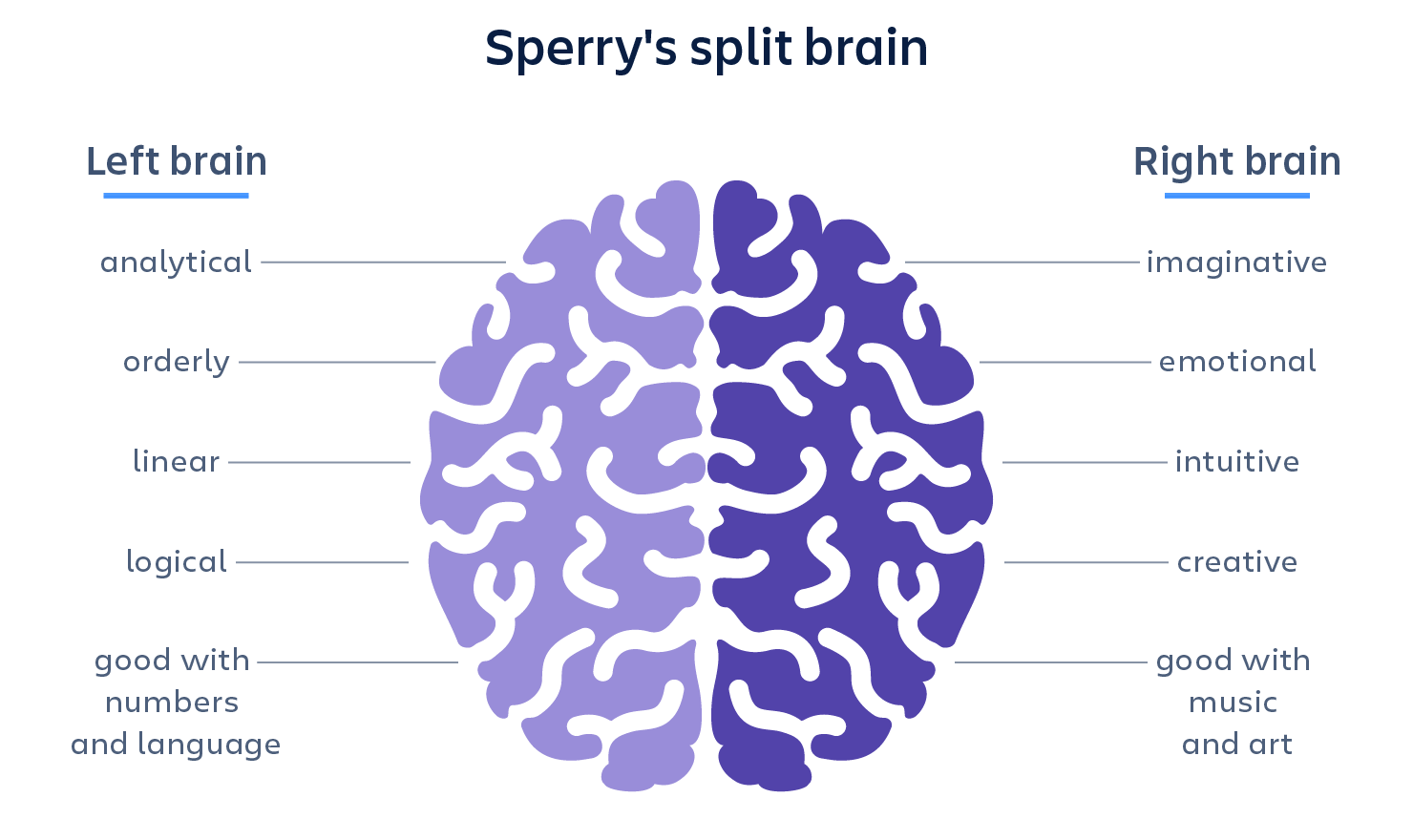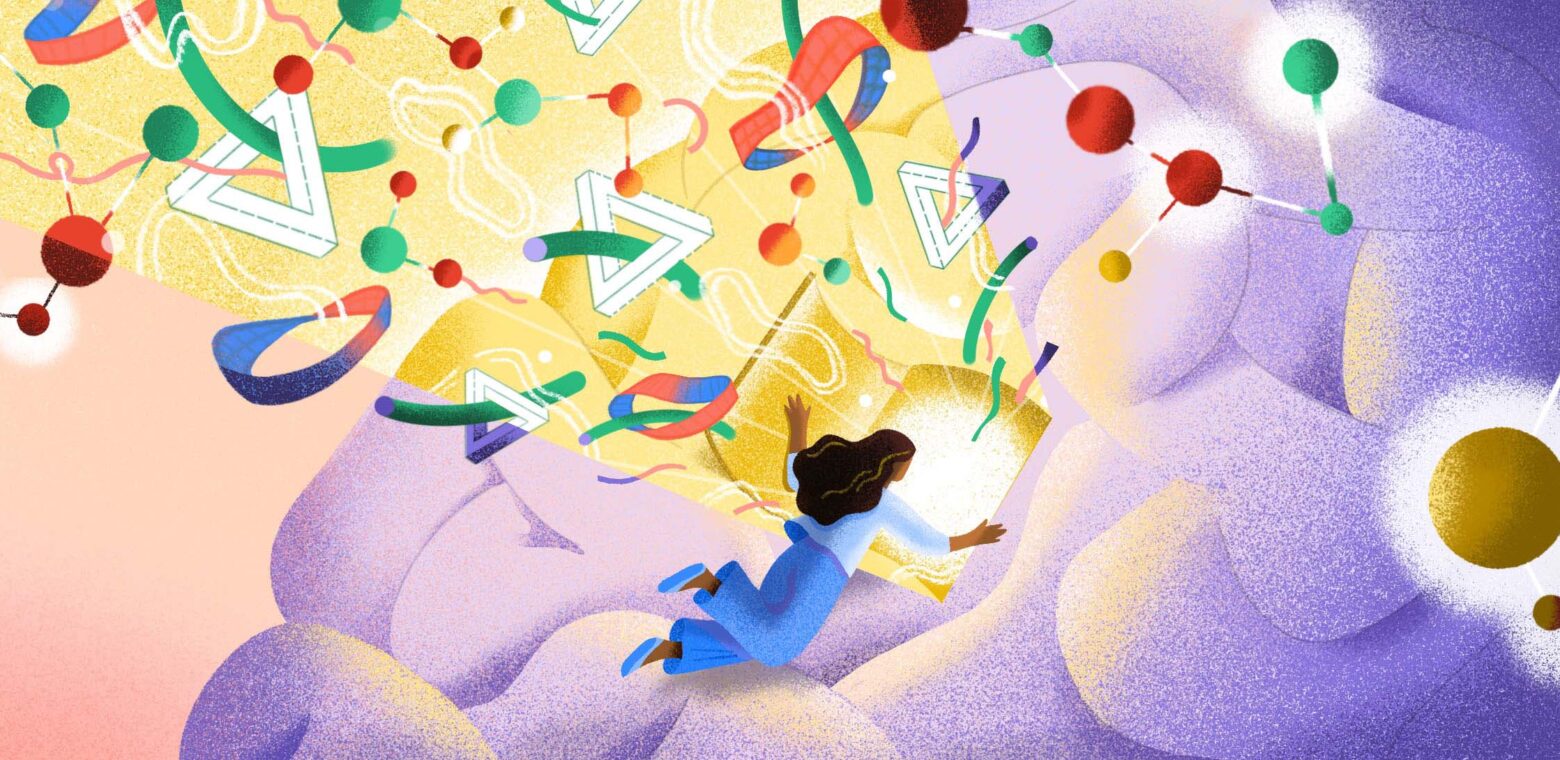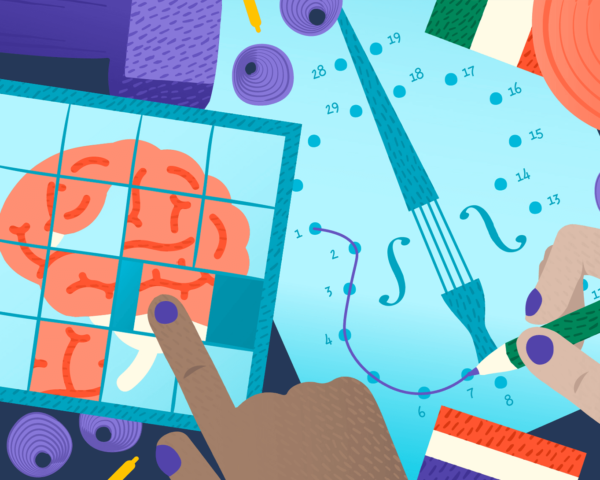Left brain vs. right brain: fact or fiction?
We’re busting myths about the brain and sharing ways you can use yours to blow minds at work.
5-second summary
- In the 1960s, neuroscience research showed that one side of the brain tends to be more dominant in each person. Since then, many people have categorized themselves as “left-brained” (analytical, methodical, logical) or “right-brained” (artsy, creative, emotional).
- Although these labels can make it easier to understand ourselves and each other, they’re limiting and, frankly, not even accurate anymore. Since the original experiments in the 60s, several more studies have busted the left brain vs. right brain myth.
- Recent research shows that the human mind is beautifully complex, constantly changing, and made for learning and growth. Each side controls different functions throughout the body, and both sides work together in amazing ways to help us become our best selves.
“I’m an Enneagram 1.”
“ENTJ. You?”
“It’s Sagittarius season!”
“I’m left-brained. Totally Type A.”
If you’ve taken personality tests or looked up your horoscope before, at least one of these probably rings a bell. But even if you haven’t, you’ve surely sparked a conversation with someone over a shared trait, interest, talent, or experience.
And you’re not alone. It’s human nature to put ourselves into categories and try to connect with similar people. For example, at work, the more artsy and creative team members (often stereotyped as “right-brained” people) often hang out together, while the more analytical “left-brained people” (managers, coordinators, analysts, etc.) tend to get along well.
While donning these self-imposed labels can help us navigate the complex world around us and build relationships more easily, this process of “social categorization” can oversimplify our identities, hinder our growth, and even be flat-out wrong — as is the case with the longstanding left brain vs. right brain myth.
🧠 The basics: how the human brain works
The human brain is an incredible organ. So incredible that we could dedicate this whole article to how it works. But since we’re teamwork experts, not neuroscientists, we’ll leave the detailed anatomy lessons to them and give you a super simple overview.
Weighing around three pounds, the brain controls not only how we think, but also how every bit of our body works. Our mind contains about 100 billion neurons and 100 trillion (with a “t!”) connections, which send and receive signals throughout the body via a superhighway of nerves. No matter how far the message has to go, it only takes a split second to get there. (Hence why stepping on a teeny tiny LEGO or stubbing your toe sends an immediate message to your brain to let out a supersized scream 😱)
The brain is divided into two halves: one hemisphere on the right and one on the left. Each hemisphere has four lobes, which each manage a different function – some voluntary, such as tasting and touching, and some involuntary, like breathing and blinking. And each hemisphere controls the opposite side of the body (right hemisphere = left side, left hemisphere = right side).
Although each part of the brain is responsible for different functions, they all work together as a “command center” to control all of our senses, movements, behavior, and survival. By better understanding how our brains work — and how they don’t — we can not just survive, but thrive.
🤔 Myth busting: Is there such a thing as left brain vs. right brain dominance?
There’s a longstanding belief that says one side of the brain is more dominant in each person. This left-brain vs. right-brain dominance theory first emerged in the 1960s when psychobiologist Roger W. Sperry conducted split-brain experiments. He and his counterpart, psychology professor Michael Gazzaniga, were some of the first scientists to investigate hemispheric lateralization, a fancy way of saying that each side of the brain specializes in different jobs or roles.
Sperry and Gazzaniga found that the left hemisphere controls speech, language, and comprehension; recognizes words, letters, and numbers; and does analysis and calculations. This is why people who are more methodical and logical are believed to be “left-brained.” Meanwhile, the right hemisphere controls creativity, perception, and spatial understanding, and recognizes faces, places, and objects – hence why more creative and emotional people are said to be “right-brained.”

Sperry won a Nobel Prize for his split-brain research, and some of it still rings true decades later. Each side of the brain is, indeed, different. Certain parts also control separate functions. And both sides still work together to keep the body running like a well-oiled machine.
However, over time, the left brain vs. right brain dominance theory has proven to be more fiction than fact. In 2013, a team of neuroscientists reviewed Sperry and Gazzaniga’s research, along with new evidence, and debunked several previous findings:
- The human brain does not favor one side over the other.
- The two sides work differently, but one side is not stronger than the other unless it’s damaged. (Likewise, despite what a bratty sibling or bully may have told you in middle school, neither brain size nor strength correlate to intelligence. Certain areas of the brain simply have stronger neural connections than others, which is what makes each of us better at certain skills – and those connections skills can be strengthened with practice.)
- We do not only use one side of our brain at a time. Both sides work in concert. For example, our left brain may do the heavy lifting with calculations, but our right brain helps with estimates and numerical comparisons.
So, while we can still thank Sperry for helping us understand how certain parts of the mind work, this myth about dominance has officially been busted.
🤯 3 brainy facts that will blow your mind and benefit your work
Not only has Sperry’s theory been debunked as overly simplistic, but subsequent research also shows that the brain is even more amazing than we once thought. It’s constantly adapting to change, reorganizing, and learning based on physical interactions and life experiences.
This bodes especially well for everyone in the world of work. No matter how old we are or what stage we’re at in our careers, science shows it’s always possible to grow and improve.
Curious what your left and right brain are actually capable of? Here are three fun facts about the mind that you can use to your advantage at work.
Learning changes the structure of your brain
During your first day on the job, you probably felt overwhelmed and maybe even out of your league. There are so many new people to meet, new environments to get used to, and new concepts to learn. But after a few weeks or months, you start to get the hang of it and feel more comfortable.
That’s because your brain sends messages along the body’s superhighway of nerves over and over, forming new connections and making foreign things feel familiar. It’s how we learn any new skill and absorb information.
In fact, the literal structure of our brain changes every time we learn something new, have a new thought, or make a new memory. Even when our brain suffers major damage, it can completely reprogram itself through a process called neuroplasticity. (Wild, right?) This is how people who have experienced physical injuries or mental trauma can heal – and how we can keep learning and growing as professionals.
Put it to work
It’s easy to get comfortable on the job, but our minds crave information. To satiate your brain’s desire for learning and keep yourself sharp, try setting aside dedicated time for training and exploration. It could be something as simple as blocking off one hour every other week to read the latest industry news or brush up on a new skill, going to a conference or event a few times each year, or a more formal initiative like participating in a secondment (job rotation) program or professional development course.
Boredom can be beneficial
Ever notice some of the best ideas strike when you’re in the shower, commuting, or laying in bed? It’s not a coincidence – it’s science!
John Eastwood, a psychologist and co-author of Out of My Skull: The Psychology of Boredom, explains that boredom can be a huge driver of innovation. When the mind is quiet, creativity kicks in to fill the empty space.
A 2013 study also showed that small amounts of boredom help prime our brains to do convergent thinking, like solving a problem. Another study the following year highlighted that we also need creativity for divergent thinking, like brainstorming. So either way, a little boredom can go a long way.
Put it to work
Consider ways to make space in your schedule for an “anti-power hour” each week: one hour where you’re not expected to produce anything. During this time, you can let your mind wander, get away from the computer and go do something that inspires you, or give yourself the time to do some open-ended, divergent thinking exercises about a topic you haven’t had a chance to tackle.
The best ideas happen when we contemplate, then collaborate
Research shows that collaborative problem-solving leads to better outcomes, as well as personal growth, greater job satisfaction, and less stress. However, a 2018 study out of Harvard Business School suggests that individual brainstorming followed by collaboration can lead to superior solutions.
In the study, three groups of participants were asked to solve traveling salesman problems. The first group worked individually, the second exchanged notes after every round of brainstorming, and the third collaborated after every three rounds.
The results were fascinating. The first group thought of many different solutions, but quality varied. The second group came up with better solutions since they got to work together throughout the process, but they ended up influencing each other and prematurely settling on one idea. The third group performed best. They each got to explore and develop their own thoughts, then come together to build on each other’s ideas – the best of both worlds.
put it to work
When your team is trying to solve a problem or come up with a new concept, start brainstorming individually, then share ideas with the group and refine them together. Techniques like Six Thinking Hats can also be effective for tackling tough decisions by having each person look at the problem with a different “hat” on, or through a different lens.
🪴“When you stop learning, you stop growing.”
Personality tests and labels can make it easier to connect with each other and help us better understand how we interact with our teammates and the world around us. However, it’s best to treat them as fun, not facts, and resist the urge to put ourselves in the purely “right-brained” or “left-brained” box – or any category, for that matter.
Even if someone tends to think more logically or creatively, we contain multitudes. Both sides of our brains are constantly working together, learning, and evolving into the next best version. Let’s bust out of the left brain vs. right brain box and develop a growth mindset to give our craniums what they crave. As Albert Einstein once said, “Never stop learning, for when you stop learning, you stop growing.”












































